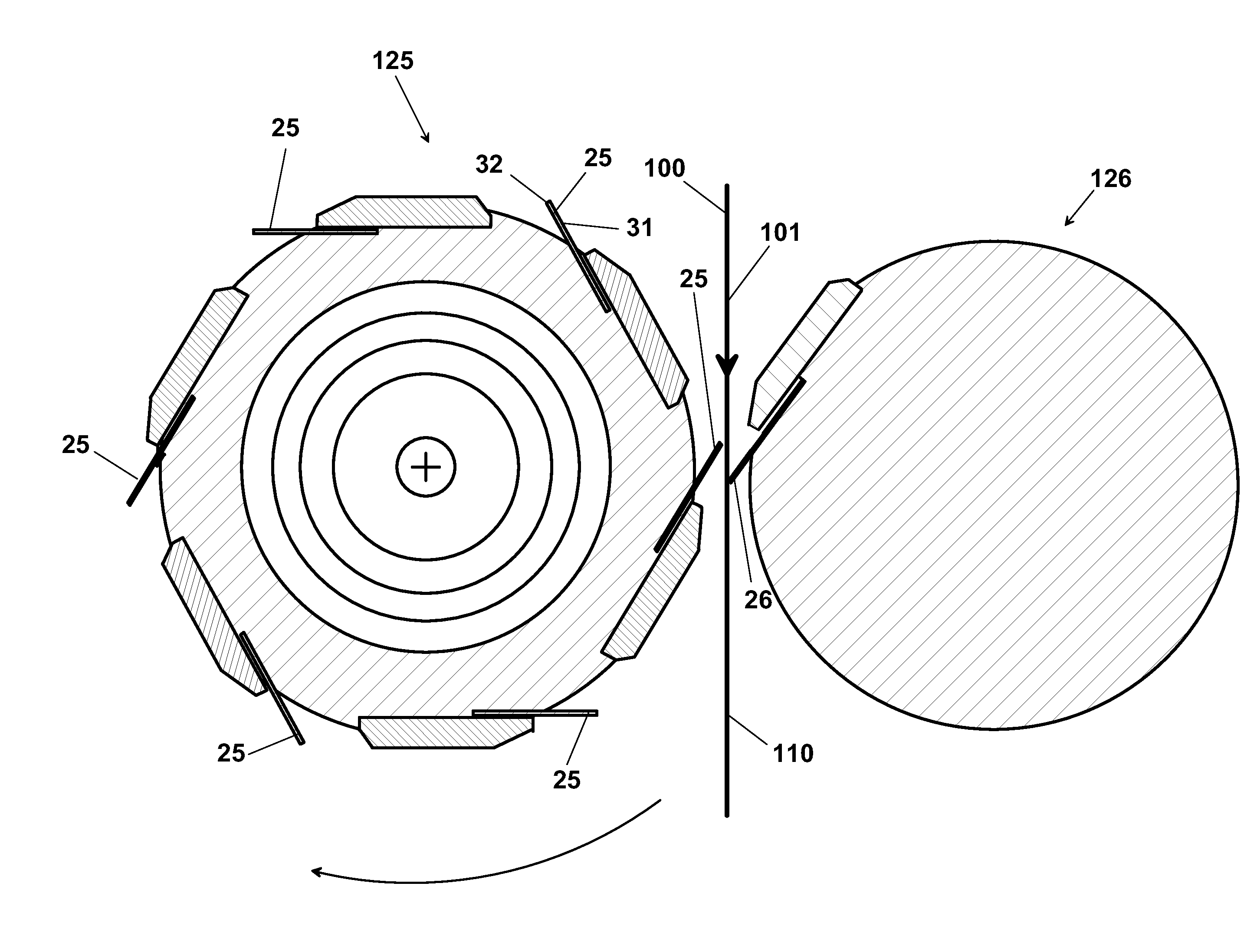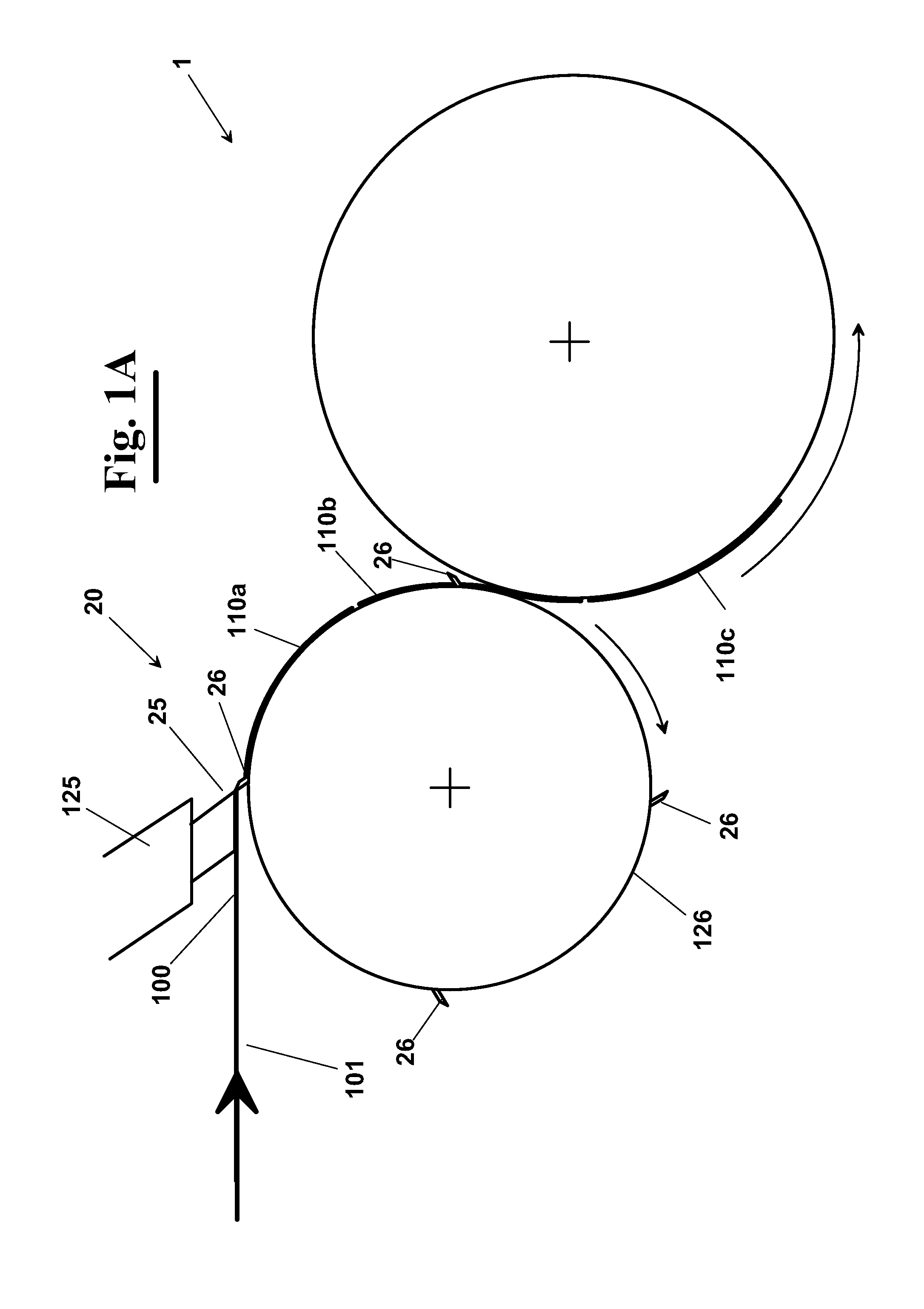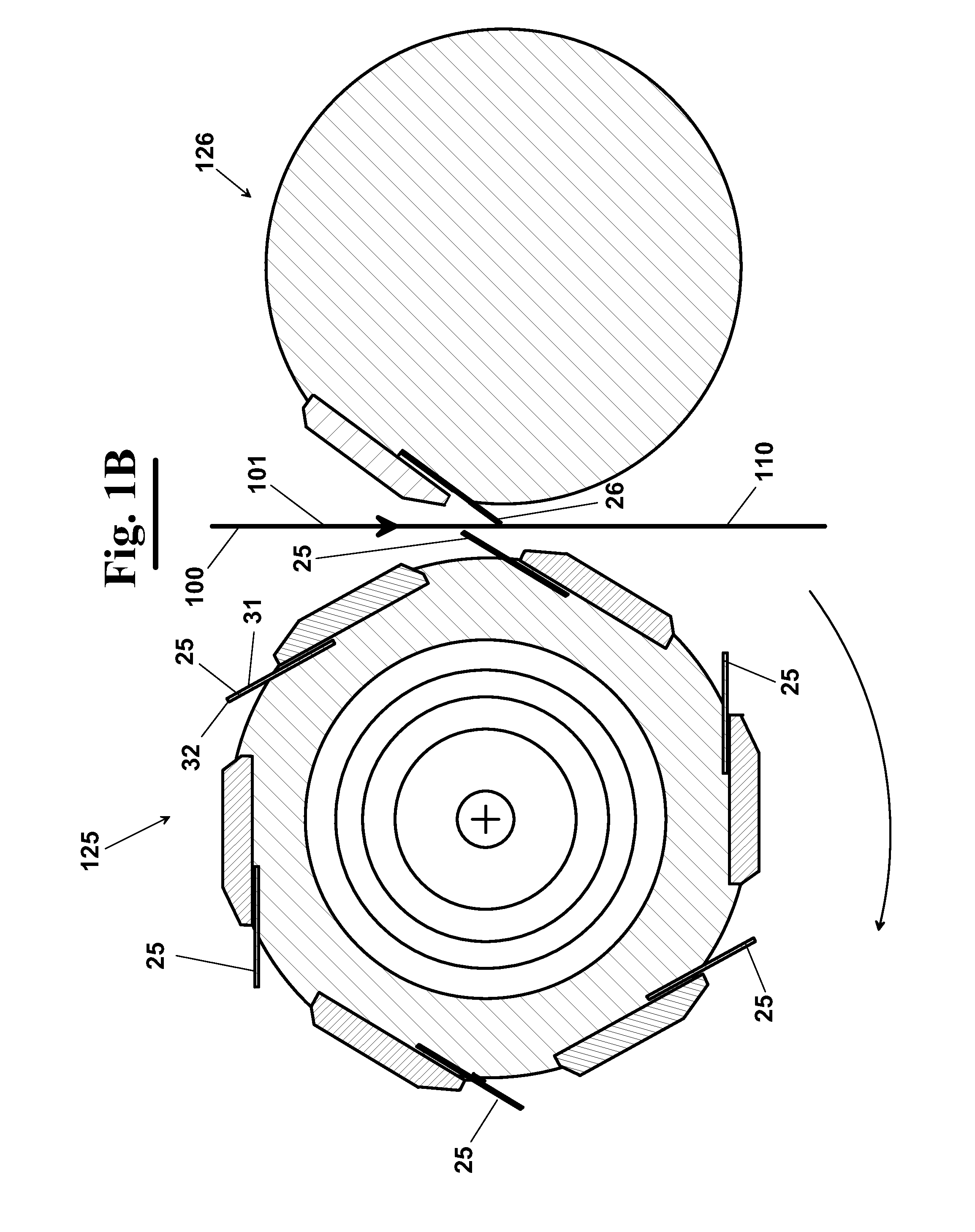Structure of paper converting machine
- Summary
- Abstract
- Description
- Claims
- Application Information
AI Technical Summary
Benefits of technology
Problems solved by technology
Method used
Image
Examples
Embodiment Construction
[0045]With reference to FIG. 1, a paper converting machine, according to the invention, such as a folding and stacking machine, or a rewinding machine, provides a cutting or perforation section 20, equipped with at least one blade 25, which is arranged to work in combination with a stationary knife 26 to provide the division of the web of paper 100 into a plurality of sheets 110 of measured length.
[0046]Blade 25 can be integral to a fixed support 125 (FIG. 1A), or alternatively to a cutting roller that rotates about a longitudinal rotation axis (not shown). In the case shown for example in FIG. 1B, the, or each, blade 25 can be a perforation blade, or a cutting blade, for example with helical shape, and is mounted to a perforation roller 125, whereas stationary knife 26 is mounted to a fixed roller 126. In both cases, blade 25 cuts or perforates web 100 into sheets 110, working in combination with stationary knife 26.
[0047]Blades 25 and stationary knifes 26 are as long substantially...
PUM
| Property | Measurement | Unit |
|---|---|---|
| Length | aaaaa | aaaaa |
| Structure | aaaaa | aaaaa |
| Size | aaaaa | aaaaa |
Abstract
Description
Claims
Application Information
 Login to View More
Login to View More - R&D
- Intellectual Property
- Life Sciences
- Materials
- Tech Scout
- Unparalleled Data Quality
- Higher Quality Content
- 60% Fewer Hallucinations
Browse by: Latest US Patents, China's latest patents, Technical Efficacy Thesaurus, Application Domain, Technology Topic, Popular Technical Reports.
© 2025 PatSnap. All rights reserved.Legal|Privacy policy|Modern Slavery Act Transparency Statement|Sitemap|About US| Contact US: help@patsnap.com



